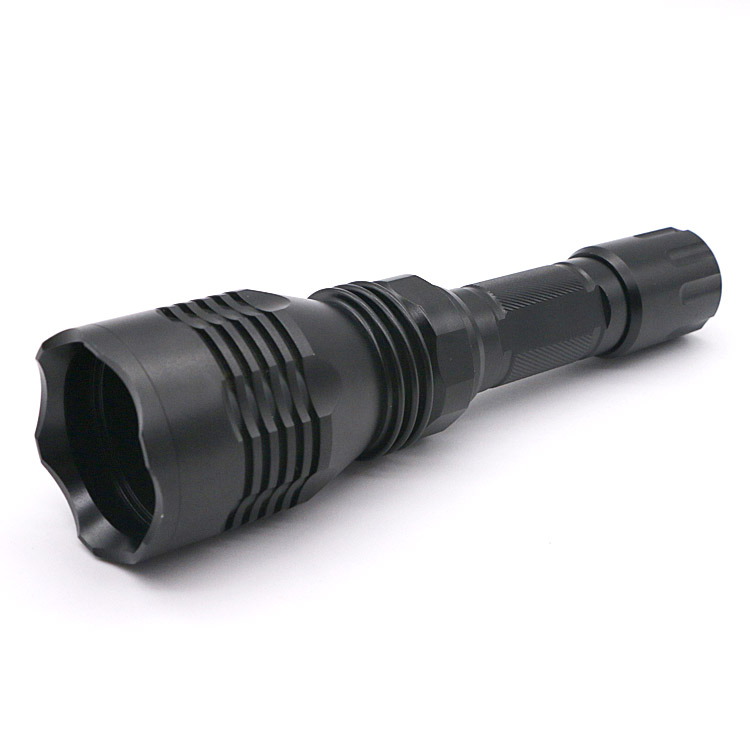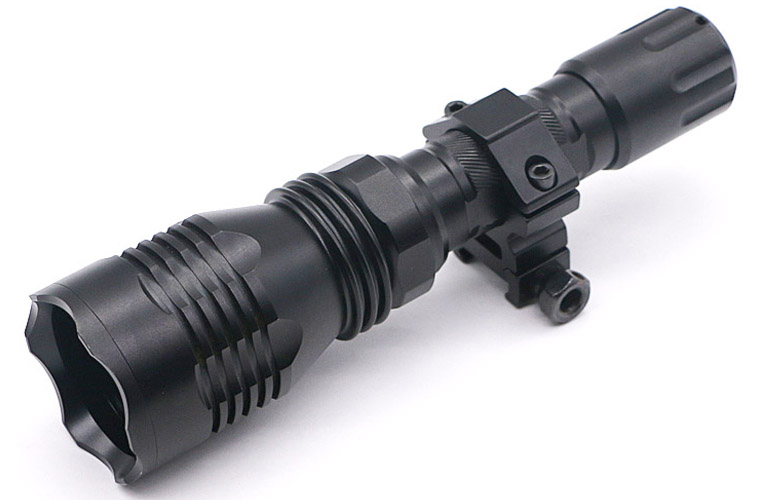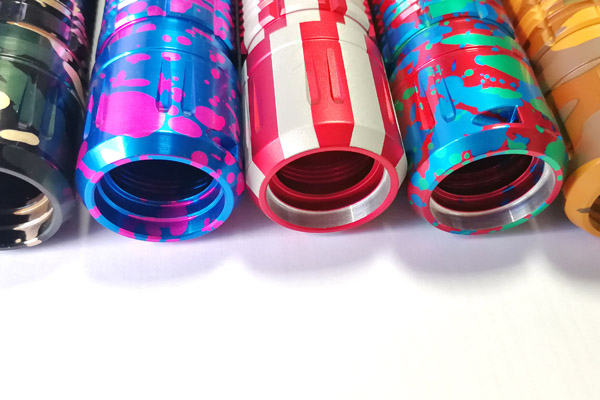15 years one-stop China custom CNC machining parts factory
Home / Product / Electronic Industry /
VMT is a CNC machining and manufacturing factory for various electronic equipment casings. With 13 years of experience in CNC machining electronic housings and various types of CNC electronic housing samples, you can send pictures to view and view the factory online, contact us immediately to obtain samples. We can provide you with various types of electronic product casing machining services to meet your customized CNC machining needs.

Product Specification:
Customized Cnc Milling Machined Black Anodizing Powder Coating Polishing Plating Laser Engraving Flashlight Housing Body Shell Parts
13 years |
1 day |
0 pc |
90% |
|
Experience |
Lead time |
MOQ |
Countries customers |
Custom CNC Machining Anodizing Flashlight Housing Body Shell Parts in China
| We are a custom CNC machining anodizing flashlight housing body shell parts manufacturer in China, providing comprehensive CNC machining services. A variety of processing techniques can be used to manufacture flashlight housing parts, and 2680 CNC machining flashlight housing parts projects have been completed. With 13 years of experience in CNC machining and manufacturing, we can provide you with CNC flashlight housing parts of different complex shapes. |
Our Custom CNC Machining Anodizing Flashlight Housing Body Shell Parts Services Manufacturer
| Custom CNC machining plays an important role in the production of flashlight housing parts. By utilizing CNC prototyping, surface treatment options and careful material selection, manufacturers can create complex designs and high-quality parts with exceptional precision, function. Partnering with a reputable CNC machining service provider is key to realizing the full potential of this manufacturing process. |
Custom CNC Machining Flashlight Housing Prototyping Machining
Use CNC machining to create functional prototypes before starting mass production. This step ensures that the design meets all specifications and requirements before proceeding. By producing samples, manufacturers can identify any design flaws, optimize performance and make necessary adjustments, ultimately saving time and resources. |
|
|
|
|
||
Custom CNC Machining Flashlight Housing Surface Treatment |
Custom CNC Machining Flashlight Housing Material |
||
|
Flashlight housing parts can be manufactured using a wide range of materials, each with its own unique properties. Some common materials used in CNC machining include aluminum, stainless steel, brass, and plastics such as polycarbonate or ABS. The choice of material depends on factors such as strength, weight, heat resistance, and cost. It's crucial to select a material that aligns with the specific requirements of the flashlight application. |
Surface treatment is a critical aspect of flashlight housing parts manufacturing. It involves applying various techniques to improve the appearance, functionality, and durability of the parts. Common surface treatment methods include anodizing, powder coating, polishing, and plating. These processes not only enhance the aesthetics but also provide corrosion resistance, wear resistance, and improved surface hardness. |
Custom CNC Machining Flashlight Housing Body Shell Parts Sample
|
|
|
||
|
|
|||
|
|
|
||
|
|
|||
|
|
|
| Custom CNC machined flashlight housing body parts for superior performance and durability. Material selection plays a vital role in ensuring the desired properties and functionality of these parts. The following are various materials commonly used in the production of customized CNC machining flashlight housing body parts. |
|
|
Aluminum
Aluminum: Aluminum is a popular choice for flashlight housing shell parts due to its excellent strength-to-weight ratio. It is lightweight, corrosion-resistant, and provides good thermal conductivity. Aluminum parts can be CNC machined with precision, allowing for intricate designs and optimal performance. Additionally, aluminum can be anodized or powder coated to enhance its appearance and provide further protection against corrosion.
More Details>> |
|

|
|
Stainless Steel
Stainless Steel: Stainless steel is known for its exceptional strength and durability, making it an ideal material for flashlight housing shell parts that require robustness. It offers excellent resistance to corrosion, high temperatures, and impacts. CNC machining stainless steel can be more challenging compared to other materials due to its hardness, but the end result is a sturdy and long-lasting flashlight housing.
More Details>> |
|

|
|
Brass
Brass: Brass is valued for its aesthetic appeal and excellent electrical conductivity. It is often used in flashlight housing body shell parts where a combination of functionality and visual appeal is desired. CNC machining brass provides precise and intricate designs while maintaining the material's natural corrosion resistance. The surface of brass parts can be polished or plated for a more visually appealing finish.
More Details>> |
|
|
|
Plastics (Polycarbonate, ABS, etc.)
Plastics (Polycarbonate, ABS, etc.): Plastics such as polycarbonate and ABS (Acrylonitrile Butadiene Styrene) are widely used in flashlight housing body shell parts due to their versatility and cost-effectiveness. These materials offer excellent impact resistance, light transmission (in the case of polycarbonate), and can be easily molded into complex shapes. CNC machining plastics allows for precise customization and optimization of flashlight housing designs.
More Details>> |
|
|
|
Titanium
Titanium: Titanium is a high-strength, lightweight material that offers exceptional corrosion resistance. It is commonly used in high-end flashlight housing body shell parts where durability and performance are paramount. CNC machining titanium can be challenging due to its hardness, but the resulting parts exhibit excellent strength-to-weight ratios and are highly resistant to harsh environments.
More Details>> |
|

|
Surface preparation is a critical step in the manufacturing process of custom CNC machined flashlight housing parts. It not only enhances the aesthetics, but also improves the functional properties and durability of the part. The following are common surface treatments used to optimize the performance of flashlight housing components. |
|
1. Anodizing
Anodizing: Anodizing is a widely used surface treatment for flashlight housing parts made from aluminum or its alloys. It involves creating an oxide layer on the surface of the part through an electrochemical process. Anodizing provides several benefits, including increased corrosion resistance, improved wear resistance, and enhanced aesthetics. The process also allows for coloring the part, providing a range of options to suit different design preferences. |
|

|
2. Powder Coating
Powder Coating: Powder coating is a popular surface treatment method for various materials, including aluminum, steel, and plastics. It involves applying a dry powder coating onto the surface of the part and then curing it through a heat process. The result is a durable, protective coating that offers excellent corrosion resistance, impact resistance, and UV protection. Powder coating also provides a wide range of color options and a smooth, attractive finish. |
|
|
|
3. Polishing
Polishing: Polishing is a surface treatment technique used to achieve a smooth and reflective surface finish on flashlight housing parts. It involves the use of abrasive materials to remove imperfections and scratches, resulting in a visually appealing appearance. Polishing not only enhances the aesthetics of the parts but also improves their cleanability and resistance to corrosion. It is commonly used for flashlight housing parts made from stainless steel or other metals. |
|
|

|
4. Plating
Plating: Plating is a surface treatment process that involves depositing a layer of metal onto the surface of the part. Common plating options for flashlight housing parts include nickel plating, chrome plating, and gold plating. Plating provides several benefits, including enhanced corrosion resistance, improved hardness, and an attractive appearance. It can also be used to achieve specific functional properties, such as improved conductivity or solderability. |
|
|
|
4. Laser Engraving
Laser Engraving: Laser engraving is a precise surface treatment technique used to create detailed designs, logos, or markings on flashlight housing parts. It involves using a focused laser beam to remove material from the surface, resulting in permanent and high-contrast engravings. Laser engraving adds a personalized touch to flashlight housing parts and is often used for branding or identification purposes. |
|
|
|
|

|
4. Hydrographic Printing
Hydrographic Printing: Hydrographic printing, also known as water transfer printing or hydro dipping, is a surface treatment method that allows for the application of intricate patterns or designs onto the surface of flashlight housing parts. It involves transferring a printed film onto the part's surface using water immersion. The film adheres to the part, providing a visually appealing and customized finish. Hydrographic printing offers endless design possibilities and can replicate textures like carbon fiber or wood grain. |
|
|

|
Surface treatment plays a vital role in enhancing the performance and aesthetics of custom CNC machined flashlight housing parts. Anodizing, powder coating, polishing, plating, painting, laser engraving, and hydrographic printing are some of the common techniques used to optimize these parts. By selecting the appropriate surface treatment method, manufacturers can achieve durable, visually appealing, and functional flashlight housing parts that meet the requirements of various applications and industries.
|
| The manufacturing process of custom CNC machined flashlight housing parts involves several sequential steps to ensure precision, quality, and optimal performance. |
| Due to the signed confidentiality agreement, the following picture is not the production process of this part, it is for reference only: |
|
1. Design and Prototyping
Design and Prototyping: The first step in the manufacturing process is the design and CAD modeling of the flashlight housing components. Design engineers use specialized software to create detailed 3D models, taking into account factors such as function, aesthetics, and manufacturability. The CAD model is the basis for subsequent steps in the process. |

|
Material selection: After the design is completed, select the material suitable for the body shell parts of the flashlight shell. Factors such as strength, weight, durability and cost are considered during the material selection process. Commonly used materials include aluminum, stainless steel, brass, plastic, and titanium. |

|
3. CNC Machining
CNC machining: After the CNC program is ready, start machining the flashlight housing parts using CNC. CNC machines, including lathes, mills or multi-axis machining centers, precisely cut, shape and remove material from selected raw materials according to programmed instructions. These parts undergo various machining operations such as milling, turning, drilling and threading to obtain the desired dimensions and features. |

|
Surface Treatments: After the parts are machined and inspected, they enter the surface treatment stage. Apply surface treatments such as anodizing, powder coating, polishing or plating to enhance the appearance, function and durability of flashlight housing components. The specific surface treatment method is selected based on the desired performance and design requirements. |

|
5. Quality Control
Quality Control: Throughout the machining process, quality control and inspection are conducted to ensure the parts meet the required specifications. This may involve dimensional checks, surface finish evaluation, and functional testing. Inspection equipment, such as coordinate measuring machines (CMMs) or optical measurement systems, are used to verify the accuracy and quality of the machined parts. |

| Quality Testing Equipment |
|
|
|
|
||
|
|
|
|
||
|
|
|
|
||
|
6. Packaging and Delivery
Packaging and Delivery: The CNC machined flashlight housing parts are packaged according to customer requirements to protect them during transportation and storage. Let zero defect CNC machining parts reach customers. |

| The manufacturing process of custom CNC machined flashlight housing parts involves multiple stages, from design and material selection to CNC machining, surface treatment, assembly, and quality assurance. By following this step-by-step process, manufacturers can produce high-quality flashlight housing parts that meet stringent requirements for precision, functionality, and aesthetics. |
|
Quality inspection reports are an important tool to ensure the quality and precision of your CNC turning work. We can provide a comprehensive overview of the finished product with a detailed test report on material and product performance, either from an in-house auditor or a third-party laboratory. Ensure finished product meets all customer requirements. |
|
Qualify Evaluation Report
For each order we receive, we can provide a list of quality inspection reports according to your processing requirements.
Inspection report
Certificate
ISO 9001:2015 IATF 16949:2015 ROHS Directive 12 patent certifications
|
 |
|
|
Custom CNC Machining Flashlight Housing Body Shell Parts FAQs
|
Q: What are the advantages of using custom CNC machining for flashlight housing parts?
A: Custom CNC machining offers several advantages, including high precision, the ability to create complex designs, excellent repeatability, and the versatility to work with various materials. It ensures the production of high-quality flashlight housing parts with optimal performance.
A: Yes, custom CNC machining is known for its ability to produce flashlight housing parts with precise dimensions and tight tolerances. The computer-controlled machining process ensures accuracy and consistency in manufacturing.
A: The production time for custom CNC machined flashlight housing parts varies depending on factors such as complexity, quantity, material, and surface treatment requirements. It can range from a few hours for simple parts to several days or weeks for more intricate designs or larger quantities.
A: Custom CNC machined flashlight housing parts can be made from a variety of materials, including aluminum, stainless steel, brass, plastics (such as polycarbonate or ABS), titanium, and copper. The material choice depends on factors like strength, weight, corrosion resistance, and specific application requirements.
A: Yes, custom CNC machining allows for precise customization of flashlight housing parts. Specific features, such as grooves, holes, or threads, can be incorporated based on design requirements. Additionally, branding elements like logos or engravings can be added to personalize the parts.
A: Yes, custom CNC machined flashlight housing parts can be designed and manufactured to withstand outdoor or harsh environments. Materials with high corrosion resistance and durability, such as stainless steel or certain plastics, can be utilized to ensure optimal performance in challenging conditions.
A: Yes, surface treatment options like anodizing, powder coating, polishing, plating, or painting can be applied to custom CNC machined flashlight housing parts. These treatments improve properties such as corrosion resistance, wear resistance, appearance, and durability.
A: Yes, custom CNC machining allows for efficient production of flashlight housing parts in both small and large quantities. CNC machines can be programmed to replicate the machining process accurately, ensuring consistency and high-quality results across the entire production run.
A: Quality control measures, such as dimensional checks, surface finish evaluations, and functional testing, are implemented throughout the manufacturing process. Collaborating with a reputable CNC machining service provider that has robust quality assurance processes in place is essential to ensure the desired quality of the parts.
A: Yes, it is possible to request samples or prototypes of custom CNC machined flashlight housing parts to validate the design, functionality, and suitability before proceeding with full-scale production. CNC prototyping allows for testing and making any necessary adjustments or improvements prior to mass production. |
| These FAQs should give you a better understanding of custom CNC machined flashlight housing body shells and their applications. If you have any other questions or need more information, our professional engineering team is always ready to serve you, 24 hours online. |
Custom CNC Lathe Turning M3 M4 M5 astener Knurled Thumb Lead Free Brass Threaded Insert Nut
 Related suggestion
Related suggestionGive us a call or send an inquiry to our emailbox, we will answer your doubts according to your customers' requirements, and quote you immediately.
